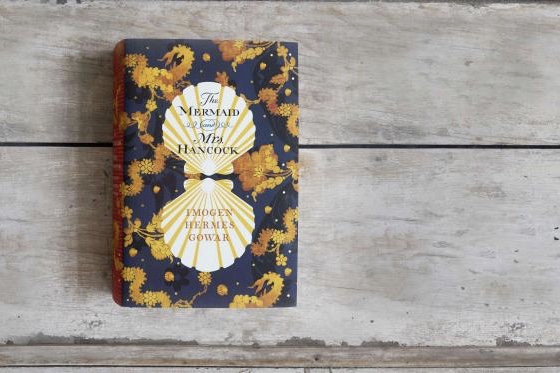By Anna Hill
Content Note: sex work, sexual violence (in the novel, not in this review), racism
(just a note that I’m white and not a sex worker)
I first came across The Mermaid and Mrs Hancock when I watched a video with the author, Imogen Hermes Gowar, giving a tour and talking about sex work and Georgian London with booktuber ReadingBukowski [content warning for sexual violence and sex work in the video]. I was immediately really interested in checking out the novel on top of the personal buzzword in the name for me – mermaids! When the novel was longlisted for the Women’s Prize For Fiction I decided to listen to the audio book, because it is one of the longest books on the list!
The Mermaid and Mrs Hancock is a historical fiction novel set in the 1780s about a merchant called Jonah Hancock and a courtesan named Angelica Neal and how their lives intermix when the body of a mermaid is swapped for one of Mr Hancock’s ships.
Brimming with detail and interesting descriptions, The Mermaid and Mrs Hancock is also as far as I can tell a nuanced exploration of sex work. Rather than the many other representations of sex work (which are generally very negative), Gowar has created a novel that depicts the positives and negatives of the profession.
Angelica Neal talks of her love of her job – how “it appeals to her character in a great host of ways: she likes to live closely with other women and share her secrets with them; she likes to sing and drink and dance; she likes to be cosseted; she likes to be looked at […] she likes to be pursued, but she does not feel she is ever captured, for it is only by her own decision that they lay hands on her”.
Whilst I was expecting more focus on the mermaid, that’s not my only criticism of the novel, I also had some issues with the way the plot moved, the first volume was, overall, too thick and too heavy with description and then the second volume felt untethered to any surprising turns – I guessed all of the major plot points throughout, and the third picked up the pace in a way that was so at odds with the rest of the novel it really didn’t work, jarring us further out of the story. As such if I wasn’t listening to the audiobook I wouldn’t have finished the novel.
Although the writing and the complicated character development and exploration was thorough and in some parts beautiful, I find myself frustrated and somewhat confused with the representation of specific characters – namely the two black characters in the novel, Simeon and Polly Campbell. Other reviews have noted the lack of time these characters and their subplot get, as well as their lesser amount of development.
I would also say that the language that Gowar, a white author, used in describing these characters was uncomfortable; and although in The Mermaid and Mrs Hancock, Gowar is clearly critiquing a sexist and tokenising approach to women and their bodies – paralleling them with the figure of the mermaid – she ends up treating Polly Campbell like a mermaid herself. Described as “a woman entirely out of the common water”, she slips in and out of the story only when needed, trapped in her own subplot that only extends as far as the second volume, quickly dropped when she isn’t deemed interesting anymore.
Sections of the novel showcase a nebulous sea-voice, meant to be a mermaid, and these are the parts of the novel that worked the best for me. They were lyrical and softer, more interesting and dynamic than the rest of the work which was so clearly researched that it made the authorship shine through. Unlike the mermaid’s perspective sections, the rest of the novel suffers rather than enlivens because of the research – the intensity of the detail and the facts shatter the fiction of the book – the specific language and contexts are almost too specific tripping the reader up, forcing us to think about the act of researching the book rather than simply allowing us to enjoy the world ourselves.
I went into this book really wanting to like it, from the beautiful cover to the potential for mermaids; but it ultimately disappointed me, with too many characters, too obvious plot points, it’s spurious representation of a side character and its hyper-detailed set up. Even the beautiful language couldn’t save it.
This post was brought to you in collaboration with Powered By Girl
